Wildflowers, Grasses and Other Nonwoody Plants
Media
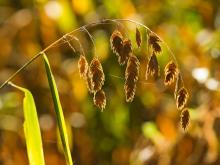
Species Types
Scientific Name
Chasmanthium latifolium
Description
River oats is a native cool-season grass that is common nearly statewide in bottomlands, stream valleys, and other moist places. The open, nodding, flattened flower and seed clusters are distinctive.
Media
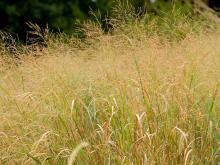
Species Types
Scientific Name
Panicum virgatum
Description
Switchgrass is a native perennial, warm-season, clump-forming mid or tall grass. In midsummer, delicate-looking, open, multiply-branching flowering clusters rise above the foliage.
Media
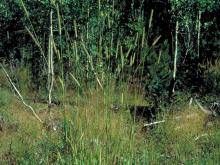
Species Types
Scientific Name
Phleum pratense
Description
A native of Europe, Timothy is a common cool-season pasture grass and occurs in a wide variety of open or disturbed habitats. It is one of the worst causes of hay fever in the late spring and early summer.
Media

Species Types
Scientific Name
Elymus virginicus
Description
Virginia wild rye can be identified by its bristly seed heads, which are held erect and whose bristle-like awns stay straight. This is a common native perennial tuft-forming, cool-season midgrass usually reaching about 2–4 feet in height.
Media
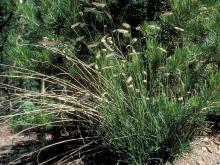
Species Types
Scientific Name
Bouteloua gracilis
Description
Blue grama is a native perennial warm-season short grass that forms dense clumps. The flowering stems are 6–12 inches tall, and the short, curving, one-sided seed head resembles an eyebrow. In Missouri, it occurs mostly in our northwestern loess hill prairies.
Media
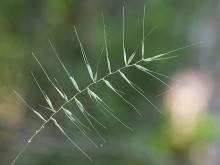
Species Types
Scientific Name
Elymus hystrix
Description
Bottlebrush grass is a native perennial, tuft-forming wild rye that typically grows in woodlands. The widely spaced spikelets spread away at a right angle from the main flowering stem.
Species Types
Scientific Name
Bromus pubescens (formerly B. purgans)
Description
Several species of brome grasses are found in Missouri. Canada brome, or hairy woodland brome, is one of the few that are native. It grows to 4 feet high, and its open flower clusters have drooping spikelets.
Media
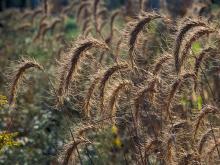
Species Types
Scientific Name
Elymus canadensis
Description
Canada wild rye can be identified by its bristly seed heads, which curve downward. As the seeds mature, the straight, long awns curve and bend. This is a common native cool-season grass that reaches about 4 feet tall and is highly valued as forage and hay for livestock.
Media
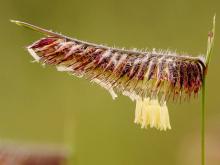
Species Types
Scientific Name
Bouteloua hirsuta
Description
Hairy grama is a native perennial warm-season short grass that forms dense clumps. The flowering stems are 4–16 inches tall, and the short, curving, one-sided, hairy seed head ends in a needle-like point. Very uncommon in our state, it occurs mostly in the loess hill prairies of northwest Missouri.
Media

Species Types
Scientific Name
Dactylis glomerata
Description
Orchard grass is a perennial, clump-forming, cool-season grass introduced to American pastures long ago. Identify this common roadside grass by its bluish-green leaves, flattened stalks, and dense, flattened, bushy clusters of spikelets.
See Also
About Wildflowers, Grasses and Other Nonwoody Plants in Missouri
A very simple way of thinking about the green world is to divide the vascular plants into two groups: woody and nonwoody (or herbaceous). But this is an artificial division; many plant families include some species that are woody and some that are not. The diversity of nonwoody vascular plants is staggering! Think of all the ferns, grasses, sedges, lilies, peas, sunflowers, nightshades, milkweeds, mustards, mints, and mallows — weeds and wildflowers — and many more!





















